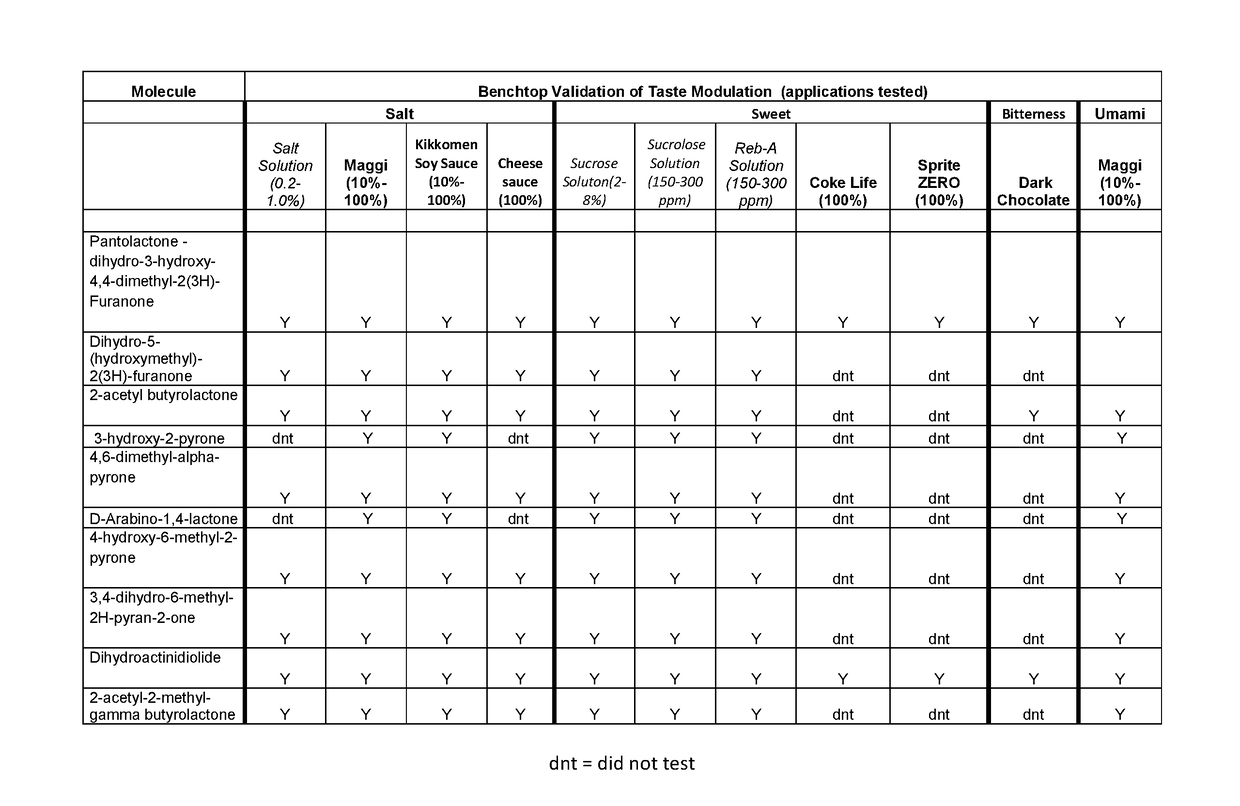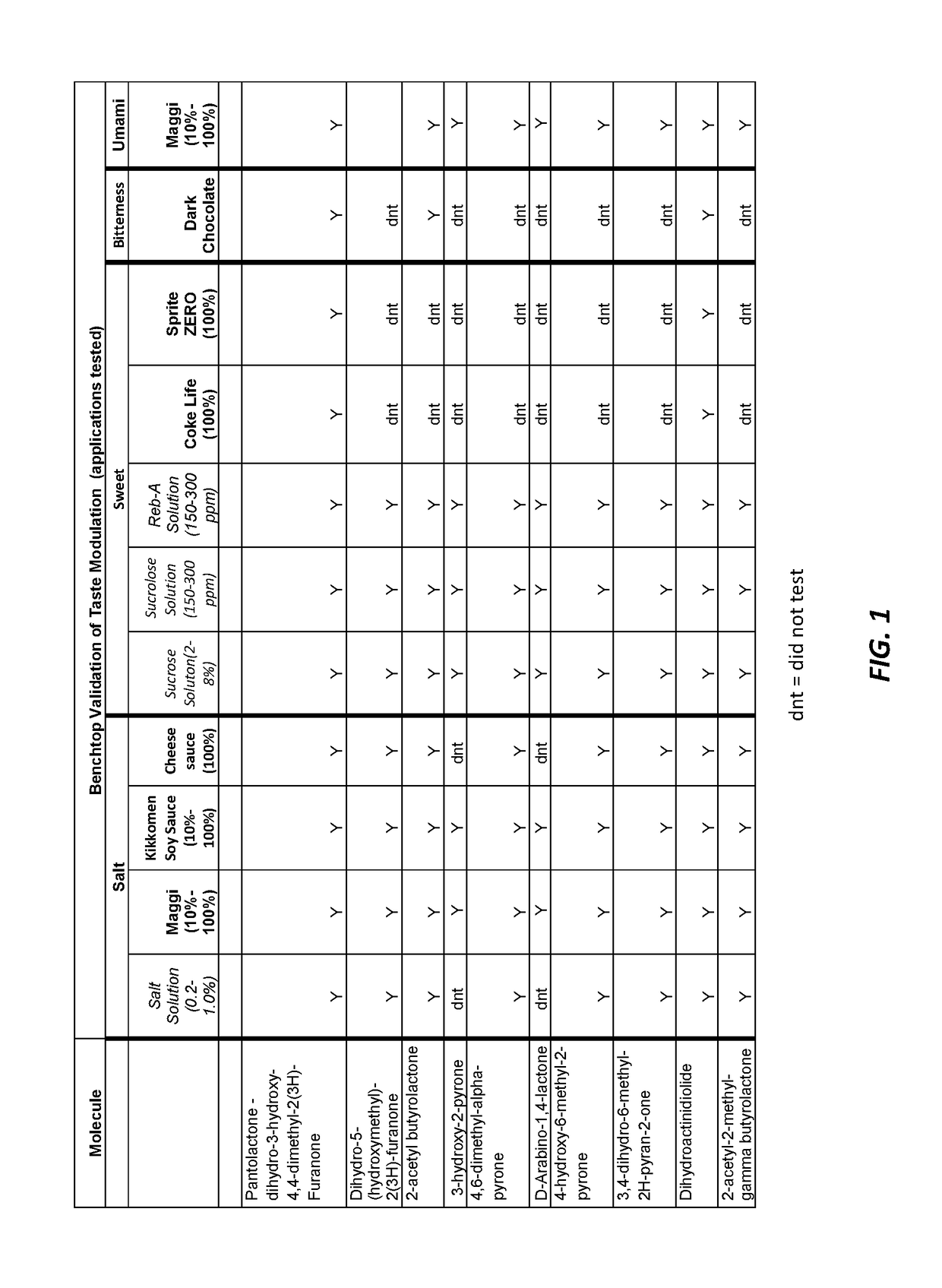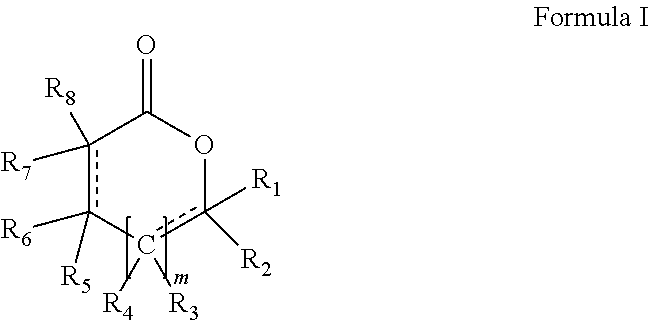Composition comprising taste modulation compounds, their use and foodstuff comprising them
a technology of modulation compounds and compounds, applied in the field of compositions comprising taste modulation compounds, can solve problems such as restricted use of this compound
- Summary
- Abstract
- Description
- Claims
- Application Information
AI Technical Summary
Benefits of technology
Problems solved by technology
Method used
Image
Examples
example 1
Saltiness of Cheese Sauce
[0034]All cheese sauce samples were served at 21° C. Samples were stirred by hand prior to portioning to ensure even distribution of components. Approximately 9 ml of cheese sauce was served into odorless, translucent, one-ounce cups labeled with three-digit codes and capped with a lid. The samples were portioned out approximately 45 minutes prior to evaluation.
[0035]Panelists evaluated all samples in fully enclosed partitioned booths under white lights. Fizz NETWORK Software Acquisitions Biosystemes 2.478 was used for data collection. Each panelist was provided with filtered water for rinsing and instructed to follow a strict rinsing procedure. The rinsing protocol required panelists to rinse prior to tasting the first sample, and after tasting each sample.
[0036]Samples were evaluated using a Deviation from Reference (DFR) method. Panelists were given an identified reference labeled “000” and a coded sample simultaneously. The coded sample was either a blin...
example 2
uce
[0040]Maggi Seasoning (manufactured by Nestlé USA, Inc., Glendale, Calif.; lot #23261124 15) served as the source of liquid savory seasoning. Table 2 shows the ingredients and quantities of the samples.
[0041]All samples were served at 21° C. Samples were inverted approx. five times by hand prior to portioning to ensure even distribution of components. Approx. 6 ml of each sample was served into odorless, translucent, one-ounce cups labeled with three-digit codes and capped with a lid. The samples were portioned out approx. one hour prior to evaluation. The test was further carried out as described for Example 1.
TABLE 2Savory Seasoning Formulations without andwith flavour modifying compositionIngredients*Control (g)Variant (g)Maggi Seasoning7.507.50Water92.3092.30Ethanol0.20—0.5% Pantolactone in—0.10ethanol0.5% 5,6-dihydro-4-—0.10hydroxy-6-methyl-2H-pyran-2-one in ethanolTotal100.00100.00*Maggi seasoning and water were combined and then separated into two batches.
[0042]Each batch ...
example 3
of Sweetness Taste Threshold
[0044]Filtered water (Brita® Basic Faucet Filtration System, model #OPFF-100) was collected into 3.8 L plastic containers and dosed with varying concentrations of either sucrose, Rebaudioside A, or sucralose. Stock solutions of each sweetener were prepared, split in half (by weight), and diluted to achieve the desired concentration levels. Diluted, sweet solutions were then dosed with either 0.2% by weight ethanol (Control) or a combination of 0.1% each of pantolactone and 5,6-dihydro-4-hydroxy-6-methyl-2H-pyran-2-one (Variant). Evaluation of Control and enriched samples was conducted twice (two rounds). Filtered water with 0.2% ethanol served as the ‘blank’ samples. Samples were prepared approximately 24 h prior to administering to the panel and portioned into odorless, translucent plastic cups and capped. All samples were served at 21 to 22° C. Four threshold scaling sessions were completed for each sweetener: two sessions of the sweetener with ethanol ...
PUM
 Login to View More
Login to View More Abstract
Description
Claims
Application Information
 Login to View More
Login to View More - R&D
- Intellectual Property
- Life Sciences
- Materials
- Tech Scout
- Unparalleled Data Quality
- Higher Quality Content
- 60% Fewer Hallucinations
Browse by: Latest US Patents, China's latest patents, Technical Efficacy Thesaurus, Application Domain, Technology Topic, Popular Technical Reports.
© 2025 PatSnap. All rights reserved.Legal|Privacy policy|Modern Slavery Act Transparency Statement|Sitemap|About US| Contact US: help@patsnap.com



